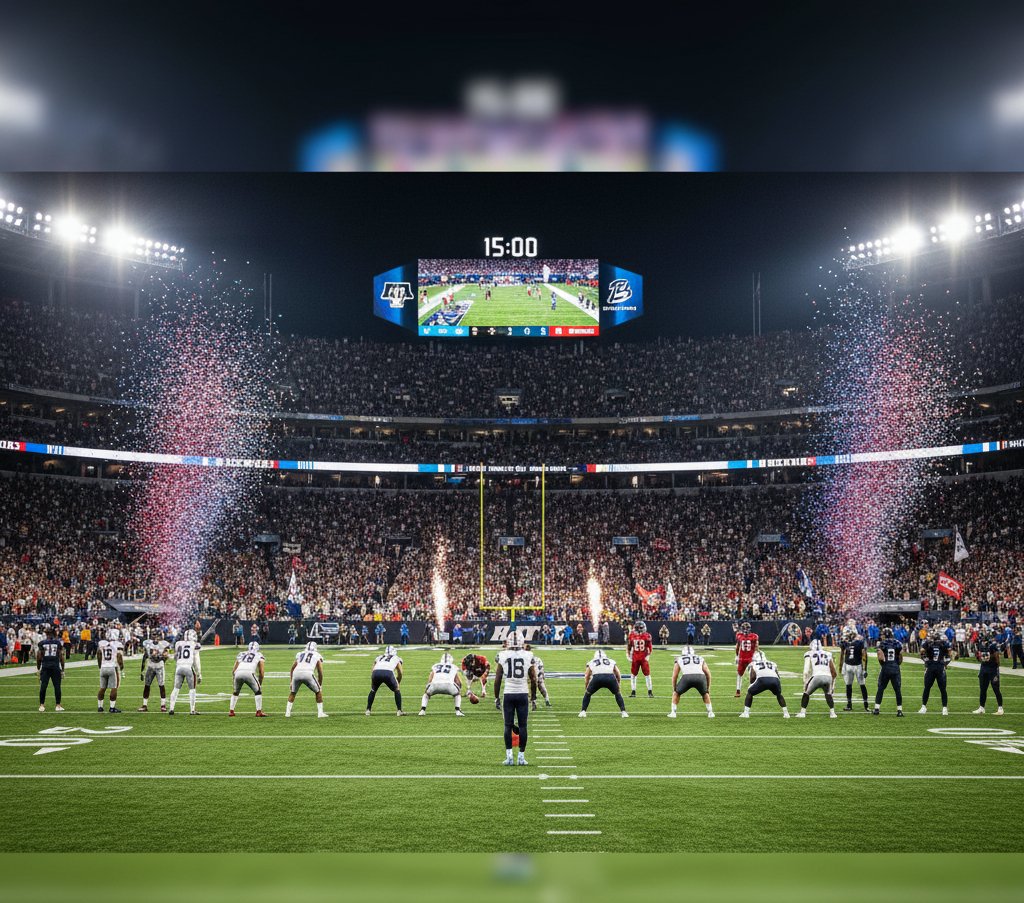Football fans often ask: How long is each quarter in NFL football? While the answer may sound simple, the structure of an NFL game is more detailed than just the time shown on the clock. Understanding quarter length, stoppages, and overtime rules helps fans appreciate the game even more.
In this article, we’ll break down the length of each quarter, explain why actual games last much longer than the official time, and compare NFL quarters to those in college and high school football.
Official Length of an NFL Quarter
Each quarter in NFL football is officially 15 minutes long. Since there are four quarters in a standard game, the total game time equals 60 minutes of regulation play.
However, this does not mean an NFL game only lasts one hour in real time. Because of stoppages, reviews, penalties, and timeouts, the average NFL game typically lasts about 3 hours and 10 minutes from kickoff to the final whistle.
Structure of an NFL Game
To better understand quarter length, let’s look at the basic structure of a professional football game:
First Quarter (15 minutes) – Game begins after kickoff.
Second Quarter (15 minutes) – Play continues until halftime.
Halftime Break (12–15 minutes) – Teams rest, coaches adjust strategies, and fans enjoy entertainment.
Third Quarter (15 minutes) – Second half begins after kickoff.
Fourth Quarter (15 minutes) – Final period of regulation play.
If the game is tied after four quarters, overtime may occur depending on the rules for regular season or playoffs.
Why NFL Games Take Longer
Although each quarter is 15 minutes on the game clock, several factors extend the real-world duration:
Incomplete Passes: Stop the clock until the next play begins.
Out-of-Bounds Plays: The clock pauses when the ball goes out of bounds.
Timeouts: Each team gets three timeouts per half.
Two-Minute Warning: At the end of the second and fourth quarters, the clock stops for an official timeout.
Injuries and Reviews: Medical stoppages and replay reviews add extra time.
Commercial Breaks: Television broadcasts add pauses that extend game length.
These factors mean that while a quarter is officially 15 minutes, it often takes 30–45 minutes of real time to complete.
The Two-Minute Warning
A unique feature of NFL timing is the two-minute warning. At the end of both the second and fourth quarters, when the game clock reaches 2:00, officials stop play automatically.
This rule:
Allows both teams to regroup.
Creates more excitement for fans.
Adds another layer of strategy for coaches.
It is one of the reasons NFL games feel longer and more dramatic toward the end of each half.
Overtime in the NFL
If the score is tied at the end of four quarters, the game goes into overtime. Overtime rules depend on whether it is the regular season or playoffs:
Regular Season Overtime: One 10-minute quarter is played. If neither team wins, the game ends in a tie.
Playoff Overtime: Games cannot end in a tie. Overtime periods continue until a winner is decided.
This extension can add significant time to an already long game.
How NFL Quarters Compare to Other Levels of Football
To understand how long is each quarter in NFL football, it’s helpful to compare professional rules with other levels of the sport:
College Football: Like the NFL, quarters are 15 minutes long. However, overtime rules differ since college games cannot end in ties.
High School Football: Quarters are shorter, usually 12 minutes each, making games faster.
Youth Football: Quarters range from 8–10 minutes depending on age groups.
These differences show how the game evolves as players progress from youth leagues to the NFL.
Impact of Timing on Strategy
Quarter length doesn’t just affect fans—it shapes the way coaches and players approach the game.
First Quarter: Teams often test plays and defensive strategies.
Second Quarter: Offenses pick up momentum before halftime adjustments.
Third Quarter: Momentum from halftime adjustments can change the outcome.
Fourth Quarter: Clock management becomes crucial, especially for teams trying to protect a lead or mount a comeback.
Understanding quarter timing helps fans appreciate why coaches call timeouts, kneel the ball, or hurry plays late in the game.
Why Timing Rules Make Football Exciting
The timing system in NFL football adds suspense and drama. Some of the most memorable moments in NFL history happened in the final minutes of a quarter or during overtime.
Last-second field goals.
Game-winning drives in the fourth quarter.
Defensive stops at the two-minute warning.
Without strict quarter rules and clock management, football wouldn’t deliver the same thrilling finishes that fans love.
Frequently Asked Questions
Q: How long is each quarter in NFL football?
A: Each quarter is officially 15 minutes, with four quarters totaling 60 minutes of regulation play.
Q: Why does an NFL game last more than three hours?
A: Stoppages, timeouts, reviews, and commercial breaks extend the real duration.
Q: How long is halftime in the NFL?
A: Typically 12 minutes, though Super Bowl halftime shows last longer (20–30 minutes).
Q: Can an NFL game end in a tie?
A: Yes, in the regular season if no winner is decided after one overtime. In playoffs, games continue until a winner is declared.
Q: Are NFL quarters longer than high school football quarters?
A: Yes. High school games usually feature 12-minute quarters compared to 15 minutes in the NFL.
Conclusion
So, how long is each quarter in NFL football? The answer is 15 minutes on the game clock, with four quarters making up 60 minutes of regulation play. However, because of stoppages, timeouts, and broadcasts, each quarter often takes much longer in real time—making most games last over three hours.
This structure adds to the excitement of football. Every quarter plays a unique role, from setting the tone early to creating high-pressure moments at the end. Understanding quarter length and timing rules not only helps fans follow the game more closely but also deepens appreciation for the strategies that make football the most popular sport in America.

